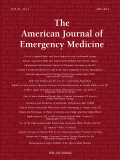
AMERICAN JOURNAL OF EMERGENCY MEDICINE
Scope & Guideline
Pioneering Insights for Urgent Medical Challenges
Introduction
Aims and Scopes
- Clinical Intervention and Treatment Strategies:
The journal publishes research on various clinical interventions and treatment strategies in emergency medicine, including medication protocols, procedural techniques, and novel therapeutic approaches to enhance patient outcomes. - Emerging Technologies and Innovations:
Research on the application of emerging technologies, such as telemedicine, artificial intelligence, and point-of-care ultrasound, is a core focus. This includes studies exploring how these innovations can improve diagnosis, treatment, and patient management in emergency settings. - Public Health and Policy Implications:
The journal addresses public health issues and policies affecting emergency medicine, including the impact of social determinants on health outcomes, emergency preparedness, and responses to health crises such as pandemics. - Trauma and Critical Care:
A significant portion of the journal is dedicated to trauma care and critical care management, focusing on the latest evidence-based practices for managing traumatic injuries and critical illnesses in the emergency department. - Patient Safety and Quality Improvement:
The journal emphasizes studies that investigate patient safety and quality improvement initiatives within emergency departments, including protocols for reducing errors and enhancing the overall quality of care. - Epidemiological Studies and Health Trends:
Epidemiological research examining health trends, disease outbreaks, and patterns of injury and illness presentations in emergency settings is published to inform best practices and healthcare policies.
Trending and Emerging
- Telemedicine and Remote Care:
The adoption of telemedicine and remote care strategies has surged, particularly in response to the COVID-19 pandemic. Research exploring the efficacy and implementation of these technologies in emergency medicine is gaining momentum. - Mental Health and Emergency Care:
There is an increasing emphasis on mental health issues within emergency medicine, with more studies addressing the management of psychiatric emergencies, substance use disorders, and the psychological impact of emergencies on patients and healthcare providers. - Data-Driven Decision Making:
The integration of data analytics and machine learning in emergency medicine for predictive modeling and decision-making processes is rapidly emerging as a key area of research. - Disaster Preparedness and Response:
Research focusing on disaster preparedness, response strategies, and emergency management frameworks has become more prevalent, reflecting the need for robust systems in light of recent global health crises. - Infection Control and Management:
With the ongoing challenges posed by infectious diseases, studies focusing on infection control protocols, management of infectious outbreaks, and antibiotic stewardship in emergency departments are gaining traction.
Declining or Waning
- Traditional Diagnostic Techniques:
There has been a noticeable decline in studies focused on traditional diagnostic techniques, such as standard imaging practices, as the emphasis shifts towards more innovative approaches like point-of-care ultrasound and machine learning applications. - Basic Life Support Protocols:
Research on basic life support protocols has decreased, possibly due to the increasing focus on advanced resuscitation techniques and the integration of technology in emergency care. - Non-emergency Specific Conditions:
Topics pertaining to non-emergency specific conditions or chronic illness management in the emergency setting have become less prominent, as the journal increasingly prioritizes acute care and trauma-related research. - Aging Population Studies:
While geriatric emergency care remains important, the volume of studies specifically targeting the aging population in emergency medicine has diminished, perhaps due to a shift towards broader public health perspectives. - Pharmacological Studies on Older Drugs:
Research focusing on older pharmacological agents and their use in emergency medicine has waned, as the focus has shifted towards novel medications and treatment strategies.
Similar Journals
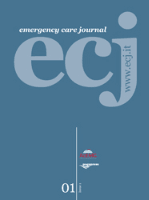
Emergency Care Journal
Enhancing Emergency Care Through Shared ExpertiseThe Emergency Care Journal is a vital open-access publication dedicated to the field of emergency medical services and nursing, published by PAGEPRESS PUBL. Since its inception in 2005, the journal has aimed to provide a platform for researchers, clinicians, and scholars to share knowledge and advance practices in the critical domain of emergency care. With an ISSN of 1826-9826 and an E-ISSN of 2282-2054, the journal is committed to enhancing accessibility and reaching a global audience. Although its Scopus rankings reflect a competitive landscape, particularly in the ranks of Health Professions and Emergency Medicine, the journal continues to serve as an essential resource for emerging studies and professional insights. Nestled in Italy, the journal seeks to bridge the gap between academic research and real-world application, ultimately improving patient care and outcomes in emergency settings. As it converges into the years 2023 and 2024, Emergency Care Journal stands poised to foster scholarly discussions and innovative research that are crucial to the evolving landscape of emergency medicine.
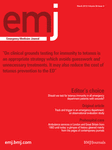
EMERGENCY MEDICINE JOURNAL
Empowering Emergency Care Through Cutting-Edge ResearchEmergency Medicine Journal, published by BMJ Publishing Group in the United Kingdom, stands as a preeminent resource within the realm of emergency and critical care medicine. ISSN 1472-0205 and E-ISSN 1472-0213 reflect its commitment to accessible research, emphasizing open access options to enhance the dissemination of vital medical insights. The journal boasts an impressive categorization, achieving a Q1 ranking in Critical Care and Intensive Care Medicine, Emergency Medicine, and miscellaneous Medicine in 2023. With a focus on high-quality peer-reviewed articles, it serves as an essential platform for sharing innovative research and evidence-based practices that enhance patient care in emergency settings. Ranking 23rd in Emergency Medicine, with a commendable 79th percentile in Scopus rankings, it underscores its position as a leading journal among peers, making it indispensable reading for researchers, professionals, and students alike who seek to stay abreast of evolving trends and practices in emergency medicine and critical care.
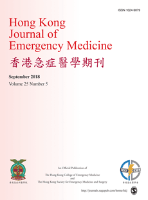
Hong Kong Journal of Emergency Medicine
Fostering Collaboration in Urgent Medical ChallengesThe Hong Kong Journal of Emergency Medicine, published by WILEY, stands as a vital resource in the field of Emergency Medicine since its inception in 2004. With a commitment to advancing clinical practice and research, this open access journal—transitioned to open access in 2018—facilitates the dissemination of crucial knowledge among healthcare professionals and researchers, fostering a collaborative environment for addressing urgent medical challenges. The journal boasts an impressive impact factor and holds a Q2 ranking in the Emergency Medicine category for 2023, reflecting its significance and influence within the academic community. Located in Hong Kong, this journal aims to explore a broad spectrum of topics related to emergency and critical care, making it an essential publication for those seeking to enhance their understanding and practice in this fast-evolving field. Accessible through ISSN: 1024-9079 and E-ISSN: 2309-5407, it promises to be an invaluable asset for researchers, practitioners, and students alike.
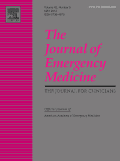
JOURNAL OF EMERGENCY MEDICINE
Elevating emergency medicine with evidence-based insights.The JOURNAL OF EMERGENCY MEDICINE, published by Elsevier Science Inc, is a premier peer-reviewed journal dedicated to advancing the field of emergency medicine. Since its inception in 1983, this journal has served as an essential resource for researchers, clinicians, and students, contributing significantly to evidence-based practices and innovations in the emergency medical landscape. With an impressive ranking of 43 out of 109 in the field of Emergency Medicine according to Scopus, and a current impact factor placing it in the Q2 quartile, this publication is recognized for its rigorous scholarly content and relevance in tackling contemporary issues in emergency care. Although it does not offer open access, the journal remains widely respected for its contribution to the global emergency medicine community, fostering new ideas and discussions that drive the field forward. For those seeking to stay at the forefront of emergency medical research, the JOURNAL OF EMERGENCY MEDICINE is an invaluable addition to your academic endeavors.

Annales Francaises de Medecine d Urgence
Elevating Standards in Acute CareAnnales Françaises de Médecine d'Urgence is a prominent journal dedicated to the field of Emergency Medicine, published by LAVOISIER. With an ISSN of 2108-6524 and E-ISSN of 2108-6591, this journal aims to disseminate vital research and innovative practices pertinent to emergency care, addressing the dynamic challenges faced by healthcare professionals in acute medical settings. While it operates under a non-open access model, it maintains an important role in advancing knowledge in the discipline, evidenced by its categorization in 2023 as Q4 in Emergency Medicine with a Scopus ranking of #85 out of 109, placing it in the 22nd percentile. Spanning years from 2011 to 2024, this journal serves as a platform for researchers, practitioners, and students committed to improving patient outcomes and advancing the science of emergency medicine. With its thoughtfully curated articles and studies, Annales Françaises de Médecine d'Urgence is a crucial resource for anyone who aims to stay at the forefront of developments in emergency medical care.

Open Access Emergency Medicine
Exploring vital advancements in emergency health services.Open Access Emergency Medicine, published by DOVE MEDICAL PRESS LTD, is a premier journal dedicated to the dynamic fields of Emergency Medicine and Emergency Nursing. With its ISSN 1179-1500, this journal has established a notable presence since its inception as an Open Access platform in 2010, offering unrestricted access to high-quality research and innovative practices in the area. As one of the leading journals in its field, it holds a respectable Q2 ranking in both Emergency Medicine and Emergency Nursing categories as of 2023, reflecting its commitment to advancing knowledge and fostering impactful research. The journal is indexed in prestigious databases with solid Scopus rankings, placing it in the 65th percentile for Emergency Medicine and the 64th percentile for Emergency Nursing, ensuring that contributions reach a diverse audience of researchers, practitioners, and students worldwide. With its focus on contemporary issues, this journal serves as an essential resource for the continual growth and development of emergency health services.
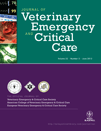
JOURNAL OF VETERINARY EMERGENCY AND CRITICAL CARE
Pioneering research for urgent animal health needs.JOURNAL OF VETERINARY EMERGENCY AND CRITICAL CARE, published by WILEY, is a leading journal in the field of veterinary science, specifically focusing on emergency medicine and critical care for animals. With an impact factor that underscores its significance in the field, this journal serves as a crucial resource for veterinary professionals, researchers, and students dedicated to advancing the care of animals in critical conditions. Since its inception in 1991, the journal has continually contributed to the knowledge base and methodological advancements in veterinary emergency practices, consistently ranking in the Q1 category for veterinary sciences, as per the latest Scopus Ranks. Located in the United Kingdom, the journal is committed to disseminating high-quality, peer-reviewed research that addresses the challenges and innovations in veterinary critical care. With its goal to enhance clinical outcomes through evidence-based practices, the JOURNAL OF VETERINARY EMERGENCY AND CRITICAL CARE remains an essential platform for scholarly communication and collaboration in veterinary medicine.

BMC EMERGENCY MEDICINE
Transforming emergency medicine through innovative research.BMC Emergency Medicine is a premier, open-access journal that has been at the forefront of the field of emergency medicine since its inception in 2001. Published by BMC in the United Kingdom, this journal is distinguished by its impact factor and remarkable Q1 ranking in emergency medicine, placing it among the top-tier publications in this vital area of healthcare. With a current Scopus rank of #30 out of 109 in the category of Emergency Medicine, and occupying the 72nd percentile, BMC Emergency Medicine is a leading platform for researchers and practitioners alike to disseminate their findings related to urgent and critical care. The journal embraces a broad scope within emergency medicine, encouraging submissions on a wide range of topics including clinical practice, innovative techniques, public health, and policy issues that critically affect emergency care. The open-access model ensures that high-quality research is readily available to the global community, fostering collaboration and advancing knowledge in the field. For those dedicated to improving patient outcomes in emergency settings, BMC Emergency Medicine represents an invaluable resource and community.

Frontiers in Emergency Medicine
Transforming challenges into solutions in emergency medicine.Frontiers in Emergency Medicine, published by Tehran University of Medical Sciences, stands as an essential open-access platform dedicated to advancing research and practice in the diverse fields of emergency medicine, nursing, and medical services. With a focus on publishing high-quality studies that address the emerging challenges in prehospital and emergency care settings, this journal has rapidly gained recognition since its inception in 2021. The journal's current Scopus rankings place it favorably within the top quartiles for emergency medical services and emergency nursing, making it a valuable resource for researchers and practitioners aiming to enhance patient care and operational efficiency in emergency contexts. The journal encourages submissions that explore innovative practices, clinical outcomes, and policy developments in emergency medicine, promising accessibility and visibility for authors through its open-access model. Located in Iran, Frontiers in Emergency Medicine not only serves the regional community but also aspires to impact the global discourse in emergency healthcare.

Emergencias
Leading the Way in Emergency Medicine ExcellenceEmergencias is a prestigious journal in the field of Emergency Medicine, published by the Sociedad Española de Medicina de Urgencias y Emergencias (SEMES). This journal has established itself as a vital platform for sharing cutting-edge research and practical insights, ranking in the top 20 of emergency medicine journals according to Scopus, with a commendable 82nd percentile performance. Since its inception, it has maintained a commitment to advancing knowledge and practice in emergency care, making contributions essential for both researchers and practitioners. The journal features diverse articles covering clinical guidelines, innovative techniques, and case studies, reflective of its importance in guiding timely medical interventions. As an open access publication, it encourages widespread dissemination of knowledge, fostering collaboration and understanding across the global emergency medicine community. Emergencias continues to publish high-quality research until 2024, making significant strides in enhancing emergency healthcare practices in Spain and beyond.